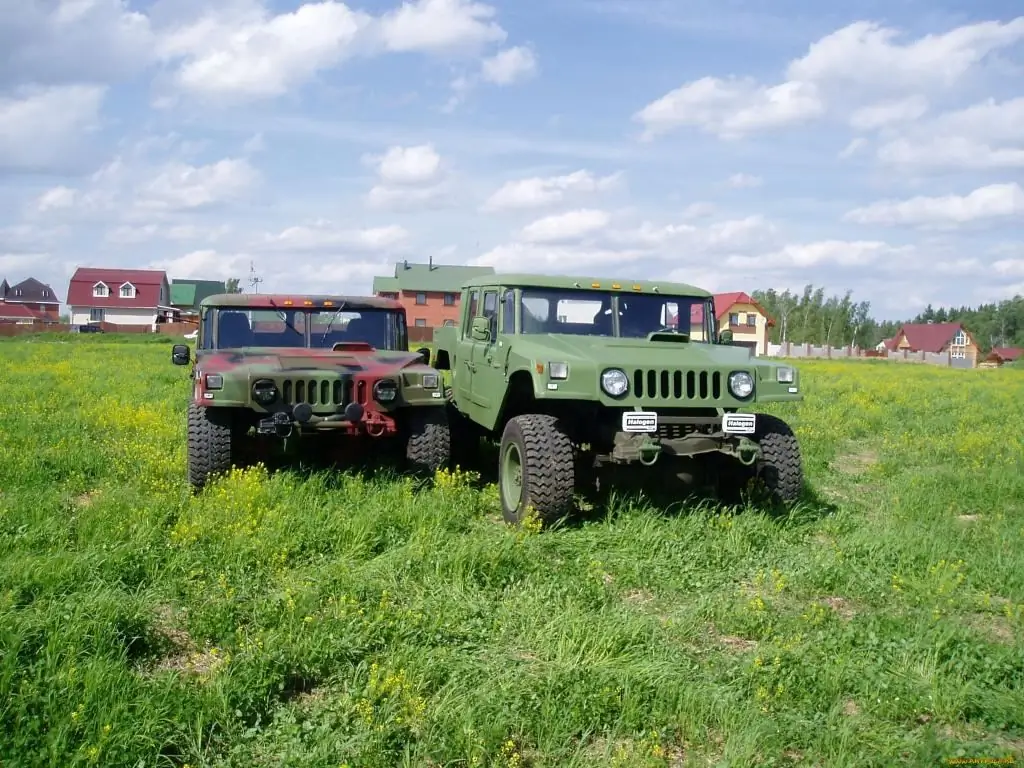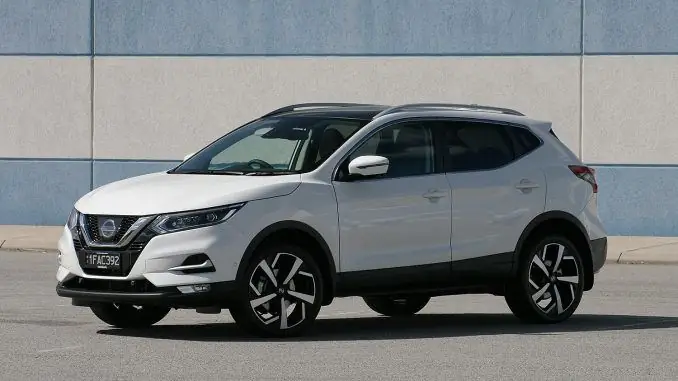2026 Author: Erin Ralphs | [email protected]. Last modified: 2025-01-22 21:14:09
At the end of the last century, the main Japanese automakers produced many mid-size models in various classes. The following is one of these cars - the Nissan Leopard.
General Features
This model is a luxury mid-size car. It was produced in four generations from 1980 to 1999. The following is a description of the Nissan Leopard for all generations.

F30
The first generation (F30) was introduced in 1980 as a luxury model of the middle class and an analogue of the second Toyota Chaser. It was updated in 1982.

The Nissan Leopard was built on the R30 Skyline platform and featured coupe and 4-door hardtop bodies. Their dimensions are 4.63 m long, 1.69 m wide, 1.335-1.355 m high. The wheelbase is 2.625 m, the curb weight is approximately 1-1.3 tons. Some design elements were borrowed from the Fairlady Z. In general, the Leopard strongly resembles the Toyota Soarer. The version for the domestic market is distinguished by mirrors on the wings withwipers.

5 engines were available for this model. Initially, it was equipped with three atmospheric options, later turbocharged modifications were added.
- Z18E. 4-cylinder two-carburetor engine, 1.8 liters. He develops 104 hp. With. and 147 Nm.
- L20E. Inline 6-cylinder engine, 2 liters. Its performance is 123 liters. With. and 167 Nm.
- L28E. This is an engine of the same layout, 2.8 liters. Develops 143 liters. With. and 212 Nm.
- L20ET. Turbocharged version of the L20E. Its power is 143 hp. s., torque - 206 Nm. Used since 1981
- VG30ET. Turbo engine V6 from 300ZX, 3 liters. Develops 230 hp. With. and 342 Nm. Used on the 1984 Turbo Grand Edition
Nissan Leopard is rear-wheel drive. It was equipped with mechanical and automatic transmissions. The initial motor was equipped with a 4-speed manual transmission, the rest - with a 5-speed and 3- and 4-speed "automatic" optionally.

Suspension features McPherson construction at the front and a trailing arm axle at the rear. Brakes - disc on the front axle and drum on the rear.
F31
The second Leopard (F31) replaced the first one in 1986. From 1989, with the creation of the Infiniti brand, it was delivered to the USA as the M30. The car still competed with the Soarer.

It was built on the C32 Laurel platform, which was also used by the R31 Skyline and A31 Cefiro. In this generation, only the coupe was left. Its length is 4.68 or 4.805(for versions with 3 liters since 1988) m, width - 1.69 m, height - 1.37 m. The wheelbase is 2.615 m, the curb weight is approximately 1.3-1.5 tons. The car was issued in European style, reminiscent of the BMW 6.

Only V6 was used in this generation.
- VG20E. Motor - 2 liters. Develops 113 liters. With. and 163 Nm.
- VG20ET. Turbo option. Its power is 155 hp. with., torque - 209 Nm.
- VG20DET. Turbocharged modification with a DOHC cylinder head. Its performance is 210 liters. With. and 265 Nm. Launched in 1988
- VG30DE. DOHC motor - 3 liters. Develops 185 hp. With. and 245 Nm.
- VG30DET. Turbocharged version with 255 hp. With. and a torque of 343 Nm.
The initial version was equipped with a 5-speed manual before restyling and an optional 4-speed "automatic". After restyling, only automatic transmission was left. All other options were equipped only with "automatic".

Front suspension - McPherson, rear - on oblique levers. The undercarriage is equipped with a sonar-based automatic adjustment system. In addition, it has several fixed modes. The F31 was equipped with 14-inch 195/70 and 15-inch 215/60 wheels. Brakes - disc brakes on both axles.
Y32
The third Nissan Leopard replaced in 1992. It shares a platform with Cedric, Cima, Gloria. Received an addition to the name J Ferie, and was sold in the USA as the Infiniti J30. In this generation, it competed with Toyota Aristo, and in the lineup it was between Primera andCedric.

This Leopard is a significant departure from the previous ones. It was presented exclusively in a sedan body. Its dimensions are 4.88 m long, 1.77 m wide, 1.39 m high. Wheelbase - 2.76 m, curb weight - approximately 1.5-1.7 tons. The car received a completely different American-style rounded design, similar to Altima, NX, Bluebird, Fairlady ZX.

The third generation was equipped with two engines, one of which remained from the previous one, and the second is the only V8 used on this model.
- VG30DE. Moved from the second Leopard. Its performance has increased to 200 liters. With. and 260 Nm.
- VH41DE. V8 DOHC - 4, 1 l. Develops 270 hp. With. and 371 Nm.
Both motors were equipped with a 4-speed automatic transmission.

The front suspension was left with McPherson designs, while the rear was replaced with a multi-link HICAS system.
Due to the large engines, the car turned out to be very expensive to operate, which affected sales.
Y33
The last Leopard replaced the third in 1996. It was built on the basis of Y33 Cedric and Gloria.

This generation also offered only a sedan. Body dimensions are 4,895 m long, 1,765 m wide, 1,425 m high. The wheelbase is 2.8 m, the curb weight is approximately 1.5-1.7 tons. The fourth Leopard has frameless doors and a folding hardtop.

Nissan Leopard once again received an extensive range of engines, some of which were inherited from the second generation.
- VG20DE. In this case, the DOHC version was used. Develops 125 hp. With. and 167 Nm.
- VQ25DE. 2.5L, V6. Its power is 190 hp. with., torque - 235 Nm.
- RB25DET. 2.5L inline 6-cylinder turbo engine. Its performance is 235 liters. With. and 275 Nm.
- VG30E. SOHC version of the motor from the second generation. Develops 160 hp. With. and 248 Nm.
- VQ30DE. 3 l, V6 from a newer series. Its power is 220 hp. with., torque - 280 Nm.
- VQ30DD. Version with direct injection and variable valve timing. Develops 230 hp. With. and 294 Nm.
- VQ30DET. Turbocharged modification with a capacity of 270 liters. With. and 368 Nm.
For all engines left 4-speed automatic transmission. This is the only Leopard to have 4WD available (for RB25DET).

The chassis design remains the same, but the wheels have been changed to 16-inch 215/55.
Recommended:
Russian "Hammer": characteristics, photos and history of creation

Russian "Hammer": specifications, base, history of creation, modifications, photos. Russian "Hammer" based on GAZ-66: description, types, operation, stages of creation, features. Russian military "Hammer": parameters, pros and cons
"Nissan Qashqai": performance characteristics, types, classification, fuel consumption, declared power, maximum speed, operating features and owner reviews

In March of this year, the premiere of the updated Nissan Qashqai 2018 model took place at the Geneva International Motor Show. It is planned to enter the European market in July-August 2018. The Japanese came up with the ProPilot 1.0 supercomputer to facilitate the management of the new Nissan Qashqai 2018
Description of the main characteristics of the ATV "Ste alth 600 Leopard"

"Stels ATV 600 Leopard" is the first truly Russian ATV. It mainly uses domestic spare parts. Designed and assembled "Ste alth 600 Leopard" at the Zhukovsky Motovelozavod. To optimize the manufacturing process of spare parts, the developers decided to use the well-known and well-established Hisun ATV 500 body in this model. More on this later
Soviet electric car VAZ: review, features, characteristics, history of creation and reviews

In fact, not only the idea, but the car itself with an electric motor began to travel on the roads before gasoline-powered cars (1841). At the end of the century before last, various records were set on electric vehicles in America, including the mileage from Chicago to Milwaukee (170 km), without recharging, maintaining a speed of 55 km / h
RB-engine from NISSAN: model, characteristics, features, pros and cons of operation

The RB engine series was produced by Nissan from 1985 to 2004. Although these 6-cylinder inline engines were installed in a relatively small number of models, they gained great fame, primarily due to sports options such as the RB25DET and especially RB26DETT. They are still widely used in motorsport and tuning to this day

